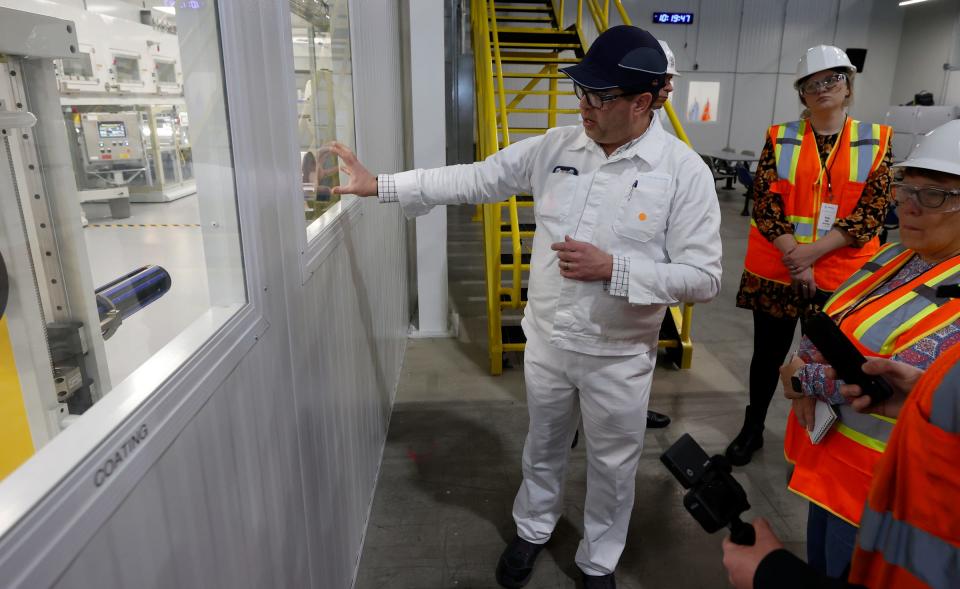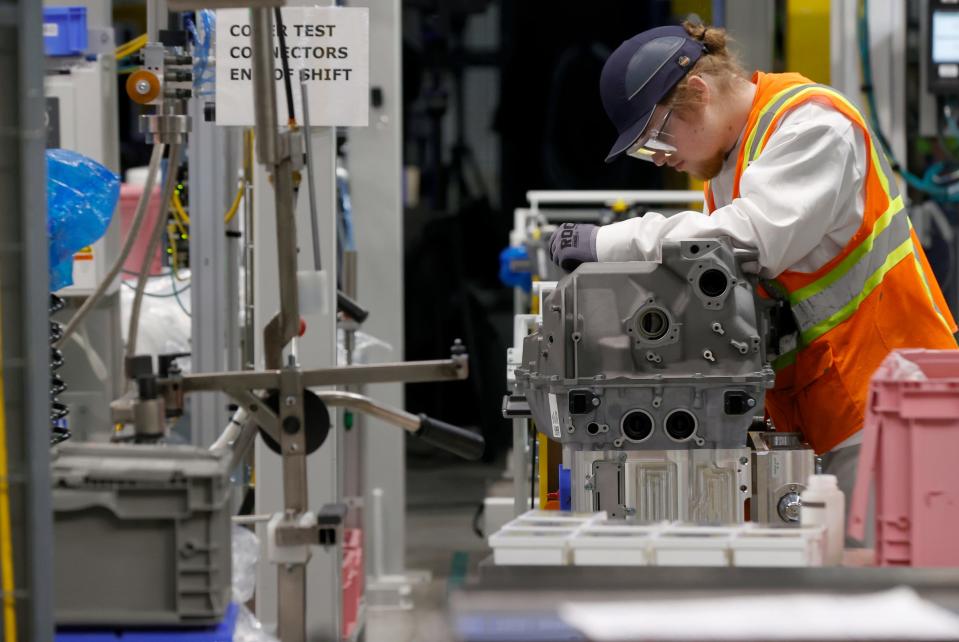GM and Honda start commercial production of hydrogen fuel cells in Michigan
Inside the Fuel Cell System Manufacturing (FCSM) plant in Brownstown Township, there's a humidity and temperature-controlled area — but don't ask for the temperature control settings. It is top secret.
"Let's just say it's room temperature," said Steve Johnson, operations manager at FCSM.
On Wednesday, FCSM became the first full hydrogen fuel cell system factory to produce the systems in mass volume for commercial use. Hence the secrecy.
To get inside that area, called the Stack and Cell Assembly, one must leave most possessions at the door, don a light blue lab coat and cloth shoe coverings and then stand in an air shower for a few seconds to rid your body and clothes of any excess debris.
"The product is sensitive to contamination, so it's sectioned off and mostly automated," Suheb Haq, FCSM president, explained to reporters brought inside for a tour.

The product is fuel cell stacks. They are made in this area where only about a half-dozen employees in lab coats work. It is a series of robots that do most of the assembly, which involves a complex process to make and install some 307 fuel cells into a "stack" — which is about the size of a microwave. The stack is then made into a hydrogen fuel cell system to be used by General Motors and Honda for various vehicles and business ventures.
“This is a historic day for the industry as GM and Honda are the first full fuel cell system manufacturing joint venture to begin volume production of fuel cells for transportation and beyond,” Haq said. “Ongoing investment and commitment by both companies is driving our success.”
Fuel cells combine hydrogen and oxygen to generate electricity to propel vehicles. If hydrogen is the fuel, the only products from it are electricity, water and heat, according to www.energy.gov. GM and Honda see fuel cells as a viable alternative to diesel.

GM and Honda established the 50-50 joint venture of FCSM in 2017. It was constructed on the joint investment of $85 million, Haq said. It has been operating for about a year now, having created 80 jobs. Wednesday marked the start of its commercial production, which Haq said will only spur business now.
"We're out in the market; we've got production units available," Haq said.
Co-developed by GM and Honda, the fuel cell system will be used in the new Honda CR-V FCEV (fuel cell electric vehicle) compact SUV due out this year, said Jay Joseph, vice president of sustainability and business development at American Honda Motor Co. Inc.
"It will go into the CR-V because it's the most popular vehicle we sell," Joseph said. "The application lends itself to the size of the vehicle and layout of the vehicle."
Honda is not announcing pricing for the vehicle, which will be assembled at Honda's Performance Manufacturing Center in Marysville, Ohio. Honda will target California for most sales of the CR-V FCEV because there are dozens of hydrogen fueling stations in the state. Joseph said it will be the only fuel cell electric passenger vehicle made in America.
GM has said it signed a joint development with Autocar Industries to use the hydrogen fuel cells on various vocational trucks such as cement mixers and dump trucks.
More: Stellantis CEO Tavares outlines EV strategy in North America this year
More: GM delays shift at Flint plant so workers can watch Detroit Lions in NFC Championship game
“EV propulsion systems like GM’s Ultium Platform are great solutions for electrifying passenger vehicles, but larger vehicles like Autocar’s class 8 trucks, refuse trucks and terminal tractors require robust solutions that enable significant energy carrying capacity and fast refueling times,” said Charlie Freese, GM executive director of Global Hydrotec.
The first of these vehicles is expected to go into production in 2026 at the Autocar Truck Plant in Birmingham, Alabama, GM said.
Contact Jamie L. LaReau: jlareau@freepress.com. Follow her on Twitter @jlareauan. Read more on General Motors and sign up for our autos newsletter. Become a subscriber
This article originally appeared on Detroit Free Press: GM and Honda start mass production of hydrogen fuel cells in Michigan